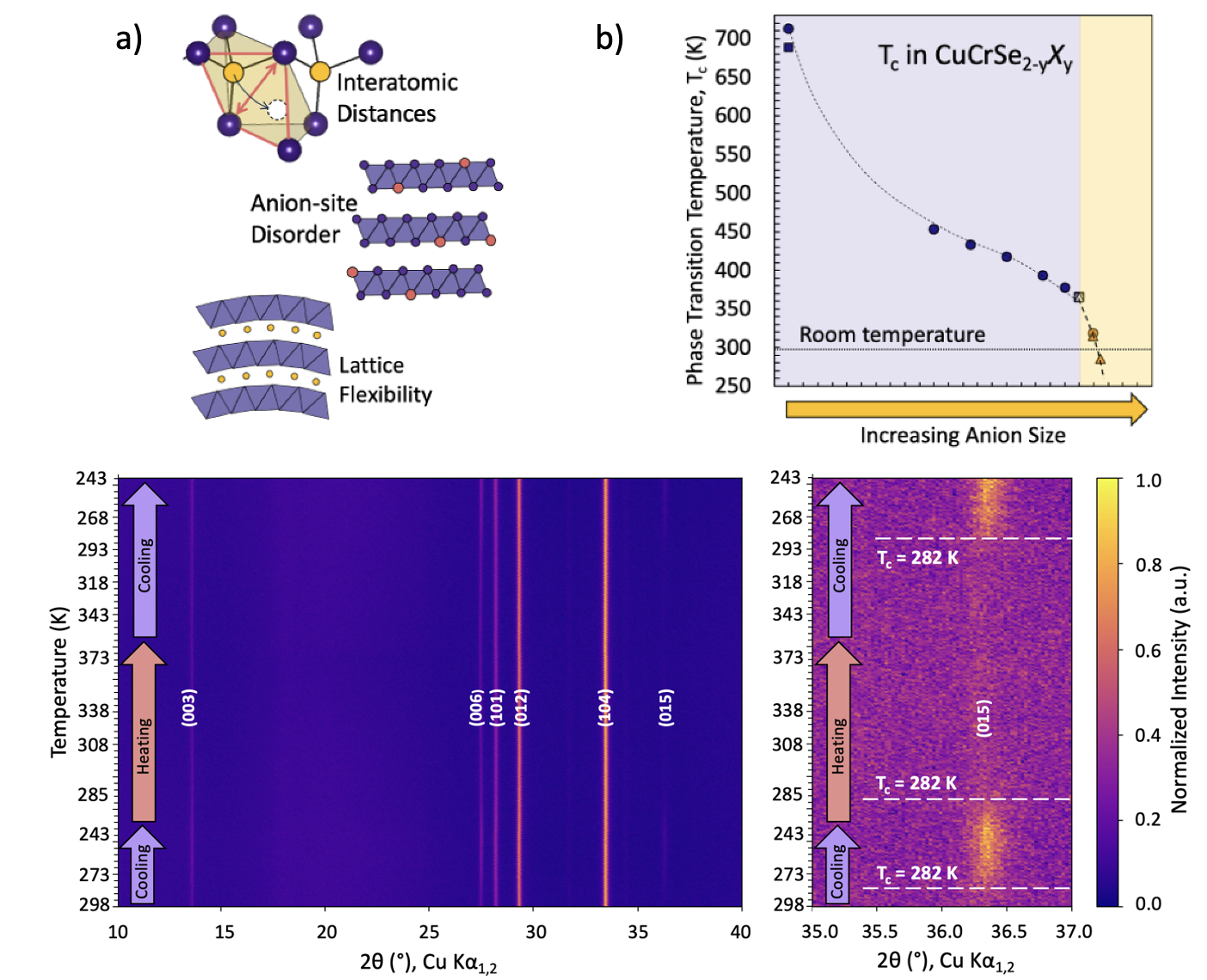Controlling the Order–Disorder Transition Temperature through Anion Substitution in CuCrX2 (X= S, Se, Te)

In solid-state ionic conductors, superionic behavior is often linked to order–disorder transitions that reduce the energy barrier for ion motion. Layered CuCrSe₂ was investigated and it was found that alloying on the anion site with smaller (S) or larger (Te) ions strongly affects the transition temperature. Substituting Te lowers the order–disorder transition to 282 K, the lowest reported for this structure type.
Structural and elastic measurements show that the trend arises from thermodynamic changes tied to bond length and lattice stiffness: increasing anion size expands interatomic distances and softens bonds, making cation disorder more favorable. These results demonstrate how tuning bonding and stiffness through anion alloying can directly control the thermodynamics of order–disorder transitions in ionic conductors.
